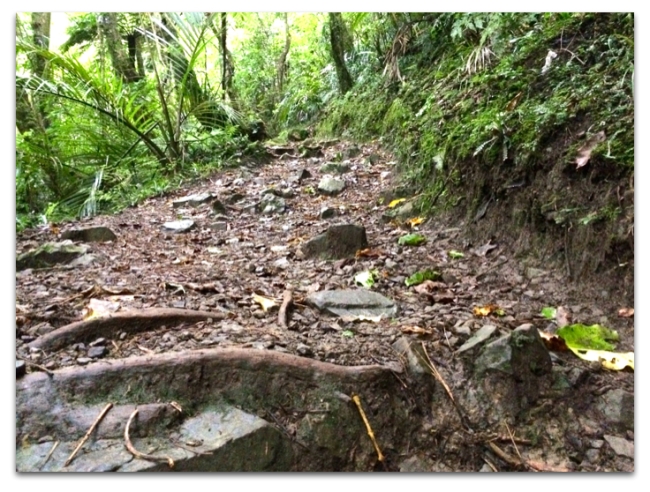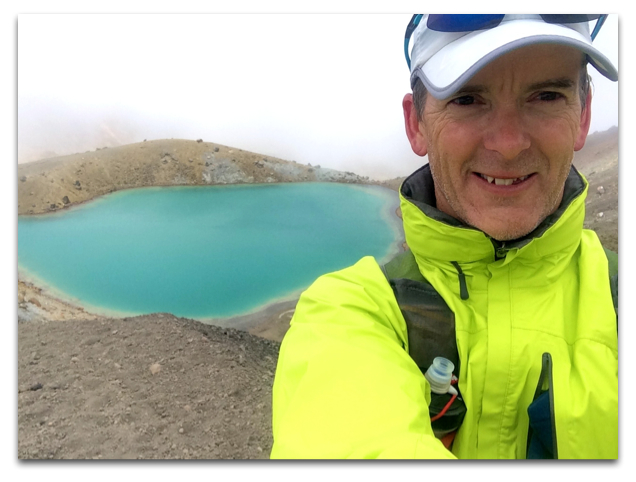I went into this race SCARED, so scared that I almost didn’t go into this race at all! The biggest challenge I faced in my maiden 50km race was the mind games that happened before I even got to the start line.
Fighting the fear
It’s typical for me to get nerves in the final week leading up to a race. I’ll sometimes feel a few injury niggles come on, perhaps a head cold will threaten, and excuses why I shouldn’t race will start popping into my head. I’ve found that having a race plan helps reduce my nerves, and come race morning I’ll be pumped and looking forward to it.
This time was different. This time I wasn’t racing. I was going to treat this as a 50km training run. I hadn’t trained specifically for the distance, but I’d been building my long run up to 3 hours, and three times I’d run 100km weeks. A 50km run might be achievable.
So when the nerves kicked in and I sat down to write my race plan, it all fell apart. My race plans are full of pace targets, time estimates and nutrition schedules. These are all geared to cove rein gthe distance as quickly and efficiently as possible – I immediately started thinking about it as a race and got caught up in planning my perfect 50km. The McMillan Running Calculator (which is accurate for my half marathon time) had me running 50km in 3:30 at 4:12min/km based on my recent 17:50 5km. This would have been 5 mins off the race record!

Clearly I wasn’t being realistic about what I could achieve based on the training I’d done, and was setting myself up for a repeat of the Gold Coast Marathon implosion. I had to forget the race plan. If this was going to be a training run, I needed to go in casually. But would I be able to stay casual once the race started? And more, would I be happy having a slow race against my name? I really needed to get my head around this whole social-racing thing!
Without my race plan blankie, the excuses arose; the niggles too. But this time they seemed very real. I was certain I had some minor injuries which were going to crystallise into “months off running” injuries under the pressure of 50km.
But the biggest obstacle was FEAR – fear of PAIN. The last 6km of the Gold Coast Marathon must have scarred me more than I’d realised. The thought of putting myself in a situation where I would feel that same 6km of pain, and then an additional 8km of pain, filled me with dread. Yes, I’d made it through last time, BUT I’d had a clear mission: “Complete a Marathon”. Plus, last time I already knew I could run that distance because I’d run it in an ironman. This time I was heading into the unknown. 50km. And why? Without a strong goal, I would falter the minute it got too tough.
Why run 50km?
During the race I asked several people why they were running 50km. For one it was an opportunity to work on her mental toughness. For another it was for the pride of saying he had done an “Ultramarathon”. One guy was taking a break from longer distances!?!
For me, there was a bit of soul-searching the night before the race. One reason I was doing it, was because it was too good an opportunity to miss – a 50km race covering much of the ground I run on every week, and me probably as run-fit as I’ve ever been with a good, solid month of running behind me. Secondly, I needed to erase the demons of the last 6km at the 2013 Gold Coast Marathon – and the only way I was going to do that was by having a strong finish in a marathon or similar distance. Thirdly, I felt obliged to run it because I’d told people I’d entered. This guilt was the main reason I didn’t withdraw during race week when the injuries were chipping away at me.
But the strong goal, that thing was going to drive me to the finish line, was that I wanted to go under 3 hours at the 2014 Gold Coast Marathon. I figured that running 50km would make 42.2km seem a doddle.
Lying in bed on race night, unable to sleep, I stumbled across my “Bucket List” on my phone. There I saw an entry that resolved my determination: “Run an Ultramarathon”. Game on!
The 50km Race Training Run begins
Race morning was yet another sunny and clear day on the Gold Coast. With a 5am start, temperatures were pleasant, but by mid-morning it would be unpleasantly hot. Clothes would get sweaty and heavy, so tight and grippy was the order of the day. I made a last minute decision to run with my trusty Fuel Belt, rather than the Ultimate Directions SJ Ultra Vest I’d been using on my trail runs. I wasn’t completely comfortable with the bottles up front (I felt they slowed me down), and I thought a backpack might be a little too hot. Without a pocket that could fit 10 gels, I cut 7 open and pored them into one of the Fuel Belt bottles and tucked an additional caffeine gel into my shirt pocket. As it turned out, the Fuel Belt worked perfectly.

Walking breaks
I positioned myself at the back and set off at a very relaxed pace – 5:30-5:45min/km. In training I’d decided that this was my “run all day” pace (well, that was the plan anyway!). The run/walk alert on my watch was set to beep every 4 mins for a 1 min walk. Although I’d trialled this the previous weekend, it hadn’t been a great success and I’d found myself surprisingly spent after just 20km. I’m a big fan of the run/walk approach and have used it in all of my long races – but usually at a 9min/1min ratio. I’d
recently read that Galloway reckons shorter, more frequent breaks are better, so I was going to give it a go.
But when the watch beeped at 4mins, I didn’t start walking. I was already near the back of the field and didn’t want to have the “tail-end Charlie” bike riding with me. “Next time.” I thought. When the watch beeped at 9 mins, I still didn’t stop. This time there were too many people around me and none of these veteran 50kmers were walking. At 14 mins the watched beeped a third time – just as the 2.5km aid station appeared. I grabbed a drink of water and walked as I drank it, letting the field flow past me. I took my time, emptied my cup, and watched my heart rate drop. “This will be my strategy.” I decided. “I’ll walk the aid stations.” So I switched off my run/walk alert and walked every 2.5km aid station for the rest of the race (barring the one I missed at 7.5km and the final one at 47.5km).

In total, I walked for almost 17 mins – roughly 1 min per aid station. I also walked all of the hills, but there were only a few little bumps. I ran a near-even split race: it took me 2:22 to get to the 25km turn around, and 2:23 to get back (excluding a 3min walk through the turnaround aid station, where I rather foolishly tackled a mammoth piece of watermelon which refused to go down!). I never timed my walk breaks but I did I occasionally check my walking HR to ensure that it had dropped below 70% of MAX (125 bpm) before I started running again. I felt the walk breaks were pretty consistent, so I was quite surprised to later find that they averaged a mere 30 secs on the way out and stretched out to 70 secs on the way back. I certainly enjoyed the walks on the return leg!
What fun!
This has to be my most enjoyable race, ever! Yes, the scenery was gorgeous, the weather great, the volunteers friendly and the food and drink plentiful. But the real jewel in this race were the other runners. Everyone was relaxed, friendly and up for a chat. It was like a group training run! Perhaps it was because I was a bit further back in the field where people were more interested in finishing than winning, but I met some lovely people out there and had some very enjoyable conversations. I found myself disappointed when an aid station appeared and my walk break would kill the conversation. But sometimes the person I was chatting with would walk the aid station with me, and if they didn’t, there was inevitably another person to chat with just up the road. I spent the first 35km discussing everything from endurance running to raising children. But then conversations got shorter, faces started to tighten up, and this thing got a wee bit more serious. I had to be content with my own company for the final 15km .

What happened to the wall?
Being alone was OK, because I was waiting for “the wall”: that dead-leg feeling and crippling pain that had terrorised my marathon 5 months earlier. From chatting with a few of the seasoned racers, I knew that the two really tough parts of the course would be the hot and airless stretch along Jefferson Lane at around 35km, and then all of Hedges Avenue in the final 5km. Jefferson came and went and I still felt fine. I was starting to pass more and more people as they faltered, and everyone looked very hot. I’d barely broken a sweat on the 25km out (I was looking at my skin to see how sweaty it got), but now my pace was a little quicker and I was starting to warm-up. After carrying a full water bottle for the first 35km and not touching it, I began sipping from it between drink stations as I felt thirsty. Following another competitors lead, I stopped at one of the beachside showers and stuck my head under for a minute – it was delightfully cooling and left me feeling refreshed for the next 10 mins (once I’d gotten the salt out of my eyes!).
Finishing strong
42.2km was the next milestone, which I celebrated in exactly 4 hours. Still no wall, and now only 8km to go, all of which was along my weekly run route from Burleigh to Kurrawa. I knew I could run that stretch no matter what, so I suddenly realised that I was actually going to complete this run! It was a bizarre trot to the finish from here, as fading racers got curious looks from beach-goers, joggers and fitness groups. Still feeling strong with one km to go, I couldn’t help myself and strode out to a 4:25min final km (it felt like a sub 4 minute km but the legs were obviously a bit tight by then).
As I hit the finish line I felt a surge of satisfaction:
Ultramarathon? Check!

Lessons learned
- I can now trust my gut on nutrition – I didn’t take any nutrition in the first half but did in the second, and all went well.
- I took too much stuff for a race with aid stations. I didn’t use any of this stuff in the first 25km! Next time forget the extra gels and suncream; reconsider the iPod; only take one water bottle and leave it empty until required; consider collecting nutrition at the halfway mark.
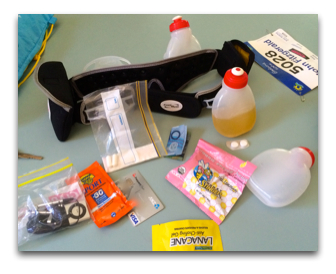
- The lycra triathlon top was ideal, but white is not flattering!
- Racing can be fun!
- A post-race ice bath is gooood!
- Miles in the legs (eg. 100km weeks) makes a big difference!





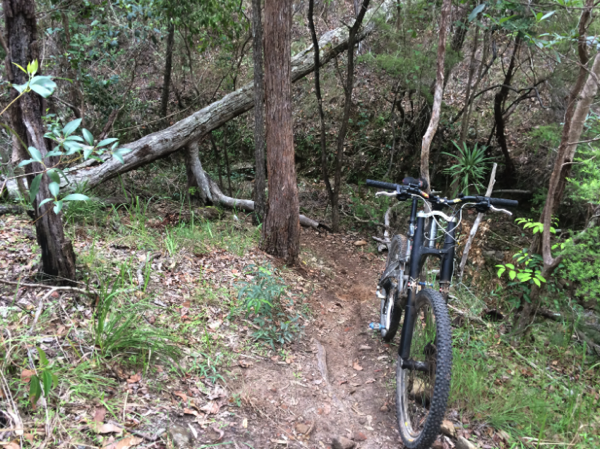




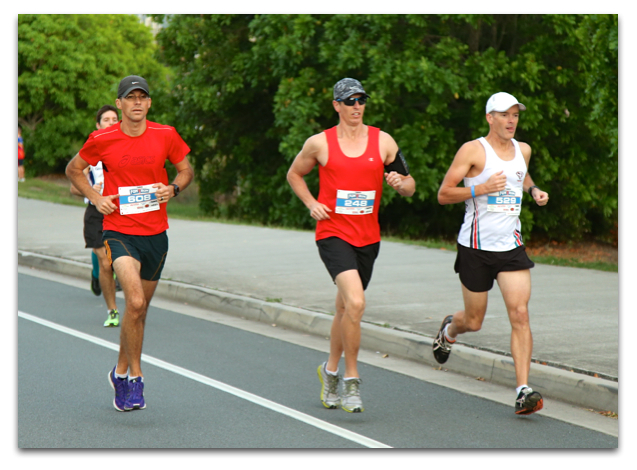
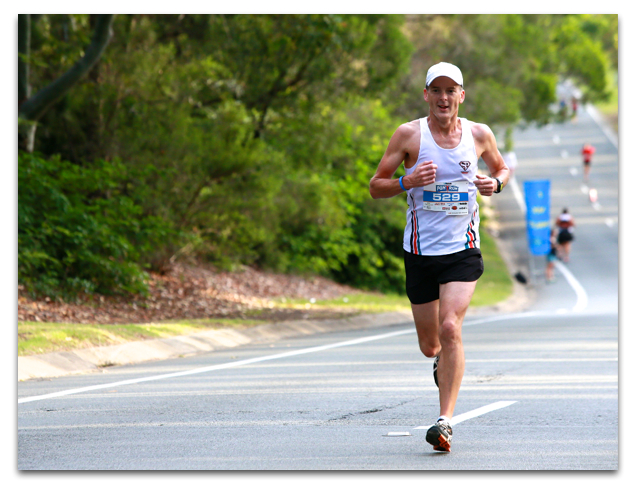







 None of the plans are quite what I’m after. There are two areas where they don’t quite deliver.
None of the plans are quite what I’m after. There are two areas where they don’t quite deliver.









